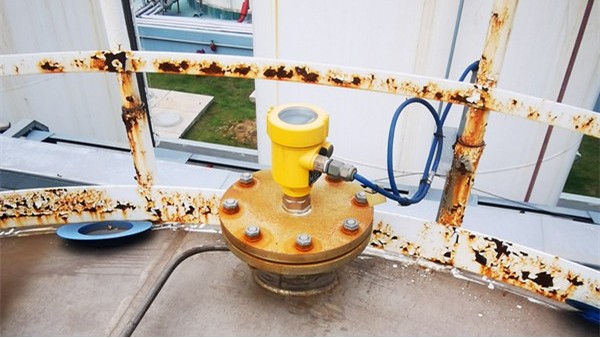Radar level meter, as an indispensable measuring tool in modern industrial automation, its accuracy and stability are crucial to ensure the smooth progress of the production process.
This article aims to explore how to maximize the value of radar level meter to ensure that it can achieve the best performance in various application scenarios.

First of all, understanding the working principle of radar level meter is the basis for realizing its maximum value. The device determines the distance of an object, that is, the level, by emitting microwave signals and receiving their reflected waves.
Microwave signals will be reflected when they encounter the surface of the medium, and the intensity of the reflected signal is closely related to the characteristics of the medium.
Therefore, correctly selecting the radar level meter model suitable for a specific application and considering factors such as the dielectric constant, temperature, and pressure of the medium is a key step to ensure measurement accuracy.
Furthermore, the choice of installation location also has a direct impact on the performance of the radar level meter. The ideal installation location should avoid strong mechanical vibrations, electromagnetic interference, and direct sunlight, all of which may have a negative impact on the measurement results.
In addition, ensuring that there are no obstacles blocking the path of the radar beam can effectively improve the quality of signal reception, thereby improving the accuracy of the measurement.

Regular maintenance is necessary to extend the service life of the radar level meter and maintain its optimal performance. This includes regular cleaning of the radar antenna to prevent interference from dust accumulation or attachments; checking and tightening the connectors to avoid loosening due to vibration; and regular calibration to ensure the accuracy of the measured data.
By formulating and implementing a strict maintenance plan, the risk of sudden failures can be significantly reduced and the continuity of production can be guaranteed.
In terms of data analysis, the application value of the radar level meter can be further improved by using advanced algorithms and software tools to conduct in-depth analysis of the collected data.
For example, trend analysis can predict the level changes in storage containers, providing strong support for inventory management and production scheduling.
At the same time, the anomaly detection function can help to detect potential problems in a timely manner, such as leakage or blockage, so that timely maintenance measures can be taken to avoid production losses. Finally, user training is also an important part of enhancing the value of the radar level meter.
Operators and maintenance personnel should fully understand the working principle, operating procedures and troubleshooting methods of the equipment. Through professional training, they can not only improve their proficiency in operating the equipment, but also respond quickly when encountering problems, reducing the downtime of the equipment.

In summary, to maximize the value of radar level meters, it is necessary to start from multiple dimensions such as selection, installation, maintenance, data analysis and user training.
By comprehensively considering these factors, not only can the accuracy and reliability of measurement be improved, but also the service life of the equipment can be extended, and ultimately the production efficiency can be improved and the cost can be reduced.
In the increasingly fierce market competition, making full use of the potential of radar level meters will bring considerable economic benefits and competitive advantages to enterprises.
